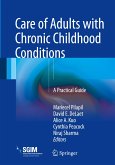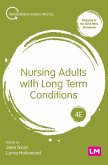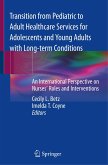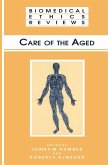Among the most critical issues facing society today is the provision of community support for people of all ages who require assistance in performing daily living tasks. Researchers have documented the support systems and needs of older persons, children with special health care needs, and young persons transitioning into adulthood. While the United States may not yet have solved many of the challenges of providing adequate supports to these populations, researchers at least have a good sense of the nature of those challenges and are working toward that end. Somewhat surprising, then, is the nearly complete lack of knowledge about the support systems and needs of a rapidly growing population of adults who are not yet considered old but who nevertheless need help due to traumatic injury, the congenital illnesses of childhood and young adulthood, and/or the early onset of chronic diseases typically associated with later life (e.g., arthritis, heart disease and cancer). Specifically, researchers know little about the millions of Americans who require assistance during the period of late middle age, a transition phase between middle age and the older years, when activity limitations associated with a chronic condition escalate sharply. The largest generation in American history to date--the baby boom generation--has begun to enter late middle age, the oldest of whom turned sixty in 2006. While the research community looks ahead to the likely strains this generation will place on the formal long-term care system, Medicare, and the Social Security system in the near future, those who find themselves in need of personal care in late middle age must first pass through a particularly vulnerable time before they are eligible to benefit from the safety net these systems afford. Because late-middle-aged adults are often considered the "carers" of society (many caring for dependent children or aging parents, and often both), we do not often think of this group as vulnerable and in need of help themselves. They, more than others, are left to rely on their own financial and family support systems to get through their difficult time, while at the same time planning and preparing for the possibility of living another 20 years or more with chronic illnesses and conditions. Up until now, we have known very little about how, and how well, they manage. In this first critical study of the availability and receipt of care for late-middle-aged adults, Julie Lima and Susan Allen uncover a host of vulnerabilities that challenge the wellbeing of those who find themselves in need of personal assistance at a critical point in their lives. Using a lifecourse approach, they outline the care needs of older adults in various stages of life, as well as the sociodemographic and policy trends that influence the amounts and types of care that are available, and that will likely be available in the near future. Since so little was known about the care needs of this group prior to this work, this book is largely descriptive in nature, and the authors intend for it to lay the groundwork for future work in this area. This is an important book for all gerontology, disability, and lifecourse collections.








